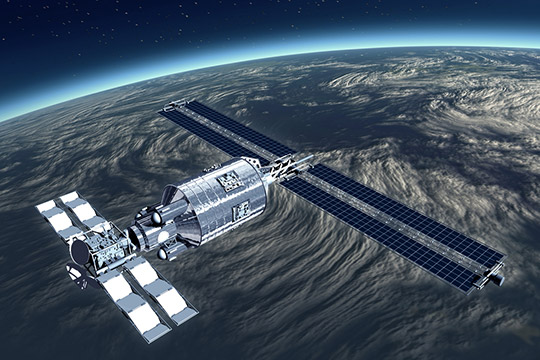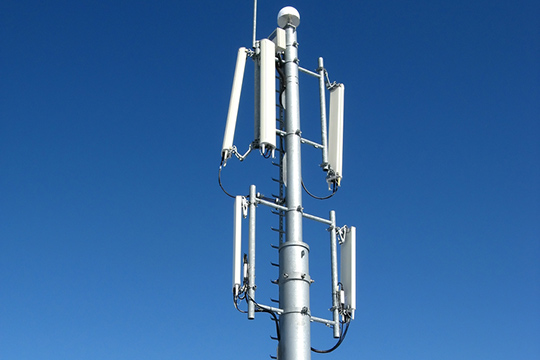TECHNOLOGY FOCUS
Satellite communication systems are playing a significant role in the exchange and delivery of many types of information, from voice communications to high definition television and Internet services . Satellites are particularly appealing whenever large coverage is desired, and when either collect or broadcasting applications are considered. High reliability and flexibility for setting up links make satellites unique for specific applications.
There are also used to complement terrestrial networks. However, satellites communications are faced with links impairments, limited bandwidth and power, and should allow access from multiple users with limited amount of interference.
From system designer to service provider, one should understand the specific constraints and opportunities of satellite communications.


COURSE CONTENT
This course presents the techniques that are used and points out the limitations and performance that can be expected from geostationary satellite systems. Emphasis is placed on the trade-offs that can be exercised within the constraints of technology and regulations.
The course is as practical as possible, underlying those techniques that are, or soon will be in use, with emphasis on performance trade-offs.
The course is designed to provide the attendees with the relevant knowledge on satellite link design and communications techniques, including those used for broadcasting and multimedia communications (DVB-S, DVB-S2). Networking aspects are introduced, focussing on physical and access layers and satellite network architectures. Specific issues in connection with the operation of multibeam satellites and on-board regeneration are dealt with.
A detailed overview on satellite communication payload, repeater and antennas, and earth station technology is given. Satellite communications engineering requires a combination of know-how in many various fields such as propagation, RF systems, antennas, signal processing, communications techniques, etc.
Several practical exercises are to be solved during the course to allow the attendees to practice the acquired knowledge.
It includes a project on the design of a European multibeam satellite communications system. The design considers performance and technology trade-off and aims at a cost efficient design of the earth segment.
WHO SHOULD ATTEND
- Engineers, scientists and technical managers involved in the planning, design and operation of satellite communications systems
- Designers and technical salesmen concerned with the manufacturing of satellite communication systems equipment
- Technicians involved in the operation and maintenance of earth station or in the control of the satellite

Day 1
Presentation of course content and organisation
Satellite Communications Systems
- Introduction to Space Missions
- Satellite Communication System Architectures
- Orbits of interest for satellite communications
- Q&A
- Basics of Radio Regulations
- Applications
- Link Performance Evaluation and Objectives
- Carrier Power Budget
- Rain attenuation calculation as a function of percentage of time
- Exercises on carrier power budget and Q&A
- Noise power spectral density budget
- Link carrier power to noise power density ratio
Day 2
Link Analysis – Digital Communications
- Overall Carrier to Noise Power Ratio linear case
- Overall link budget with intermodulation and interference
- Link availability and static margin
- Exercises on calculation of static margin as a function of link availability
- Digital communications system model
- Basics of digital modulations: BPSK, QPSK
- Higher order modulations: MPSK, APSK
- Spectral efficiency and roll-off concepts
- BER vs E/No performances
- Channel Coding and Decoding,
- Definition of networking architecture
- Calculation or required C/No
Day 3
Digital Communications – Satellite Networking
- Coding with variable RF bandwidth (review) and Coding with constant RF bandwidth
- Exercises on Power-bandwidth trade-offs
- Concatenated Coding DVB-S2, DVB-SX, Adaptive Systems
- Fade Mitigation Techniques
- Satellite Network Architectures : mesh, star; connectivity requirements
- Multiple Access Techniques : FDMA
- Multiple Access Techniques : Random access, TDMA
- Multiple Access Techniques : CDMA
- Frequency reuse, Multibeam access systems architecture
- DVB-S2-SX/RCS2 Systems
- Link budgets definition
- Overall C/No as a function of input back-off
Day 4
Multibeam and High Throughput Systems
- Interference and connectivity issues
- Transparent and on-board processing
- Way forward to HTS and VHTS
- Exercises on frequency reuse factor
- Communication payload functions and performance objectives
- Communication payload architectures
- Repeater components technology : LNA, IMUX, OMUX
- Repeater components technology : HPA
- Antenna coverage concepts
- Antenna technologies
- Overall C/No as a function of input back-off
- Station EIRP vs G/T requirements
Day 5
Earth Station technology
- Earth station and user terminal architecture
- Antenna subsystem
- Exercise on Solar interference issues
- Pointing and tracking
- RF Equipment: Low Noise amplifiers
- RF Equipment: High Power Amplifiers
- Ground Communications Equipment
- Up and down conversion, selection of intermediate frequency
- Selection of antenna diameter and type of tracking
- G/T and EIRP calculations
- Synthesis and Q&A
Said about the course from previous participants:
"Very skilled instructor!"
"Parallel exercise to compare theory and real life problems."
"General scope, practical exercises. Completeness, interactivity."
"The professionalism of the lecturer, way of explaining things."
"Ability to make us understand without too much maths, technical insight."
"Good overview, simple explanations of complex matters."
"Gave a good overview of "all" aspects of Satellite Communications."

